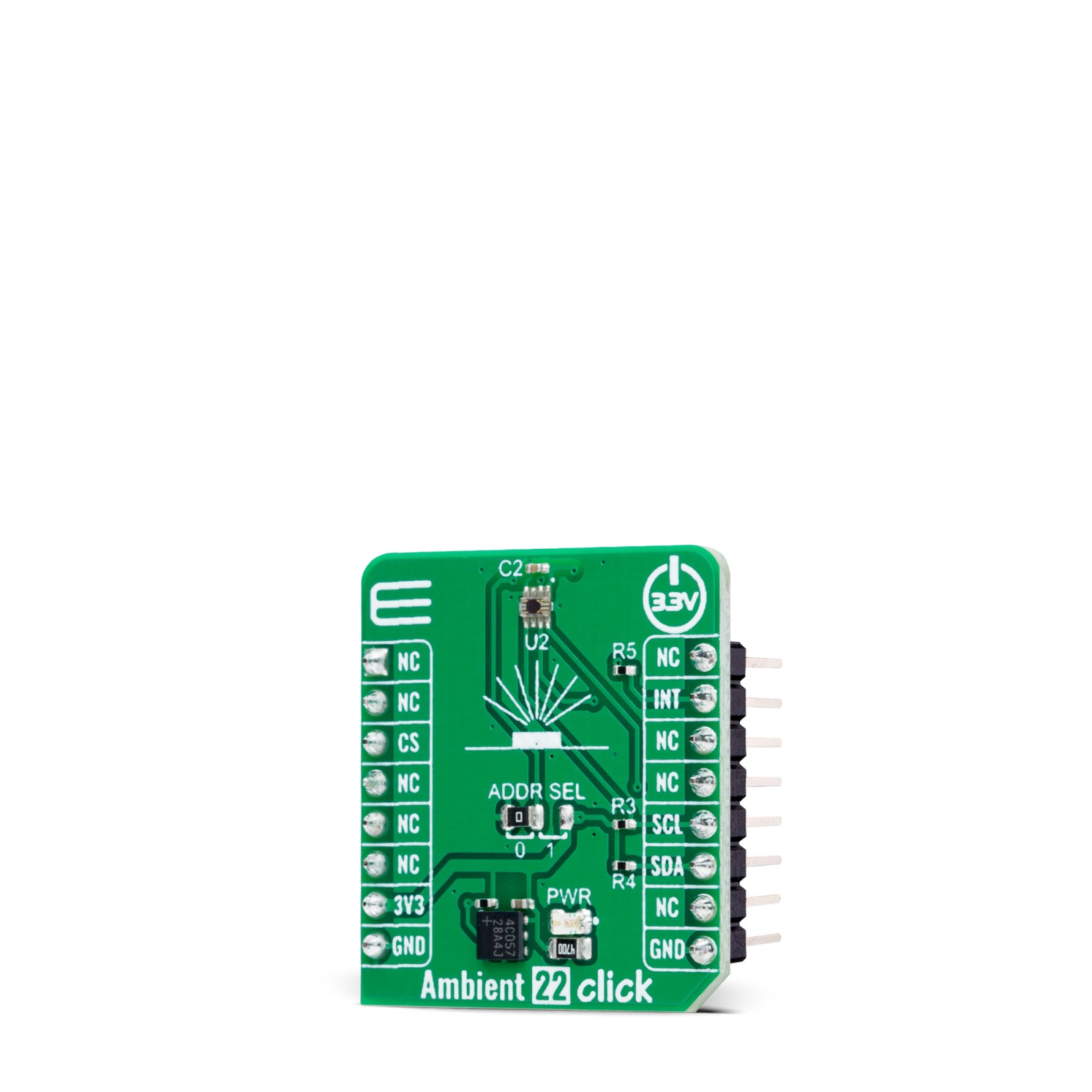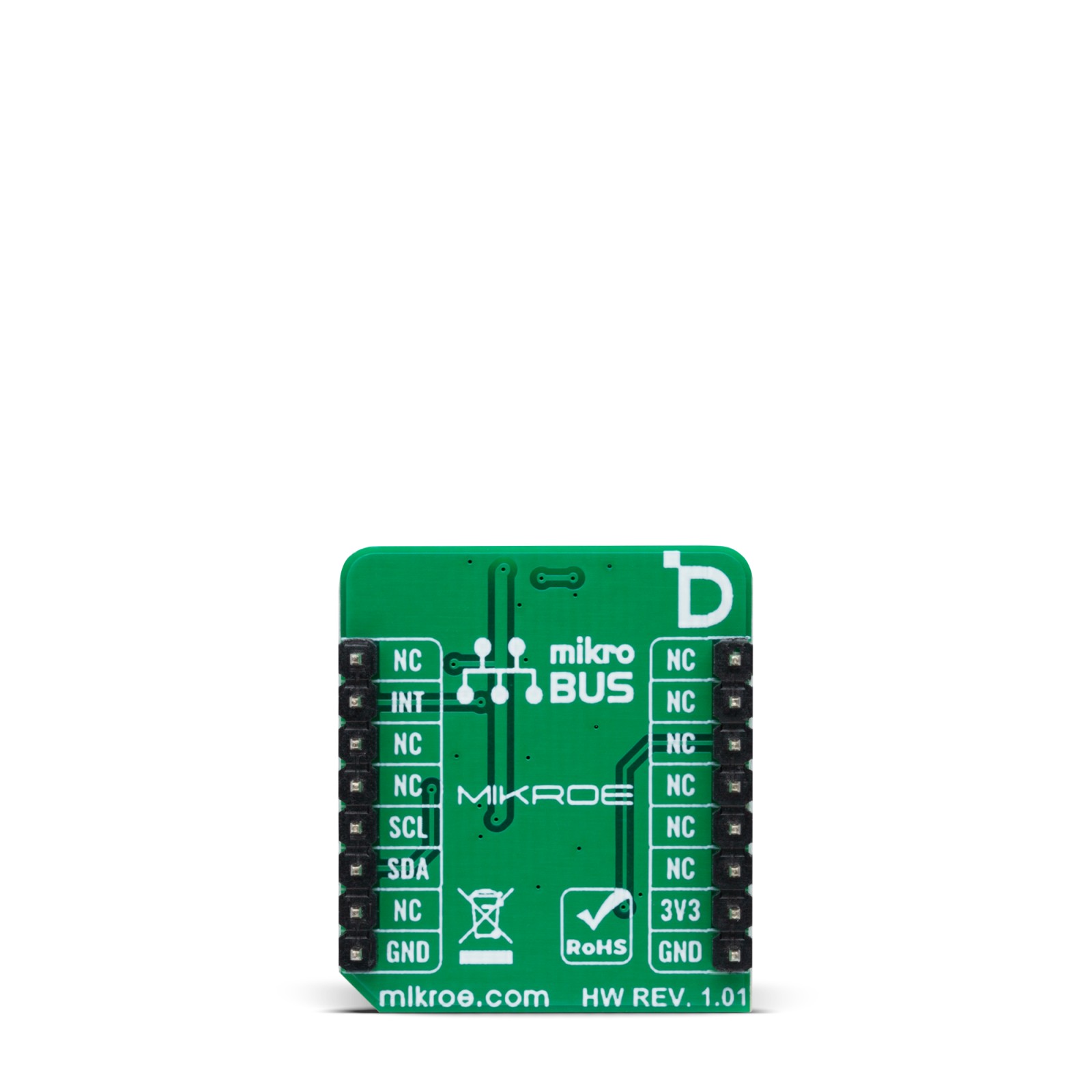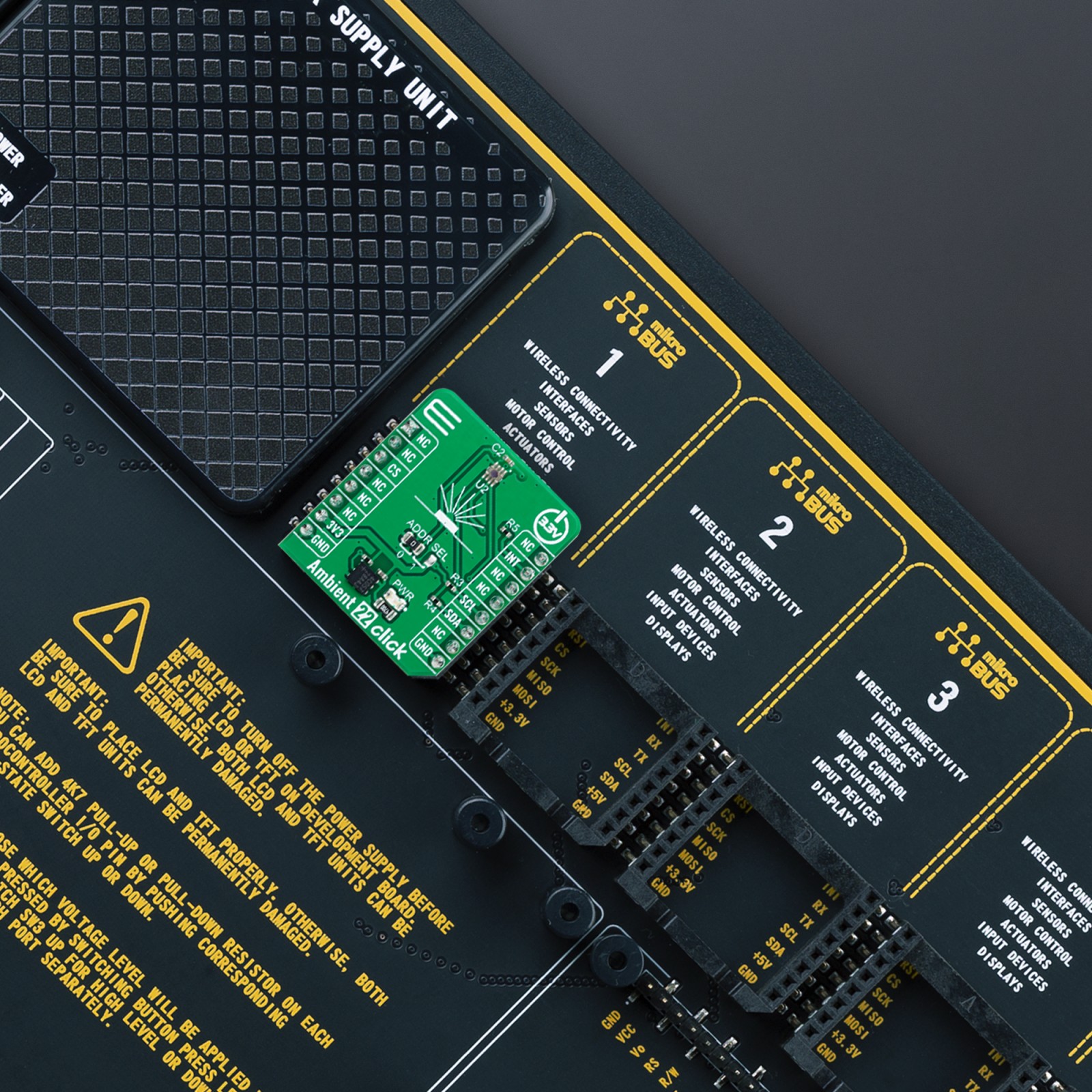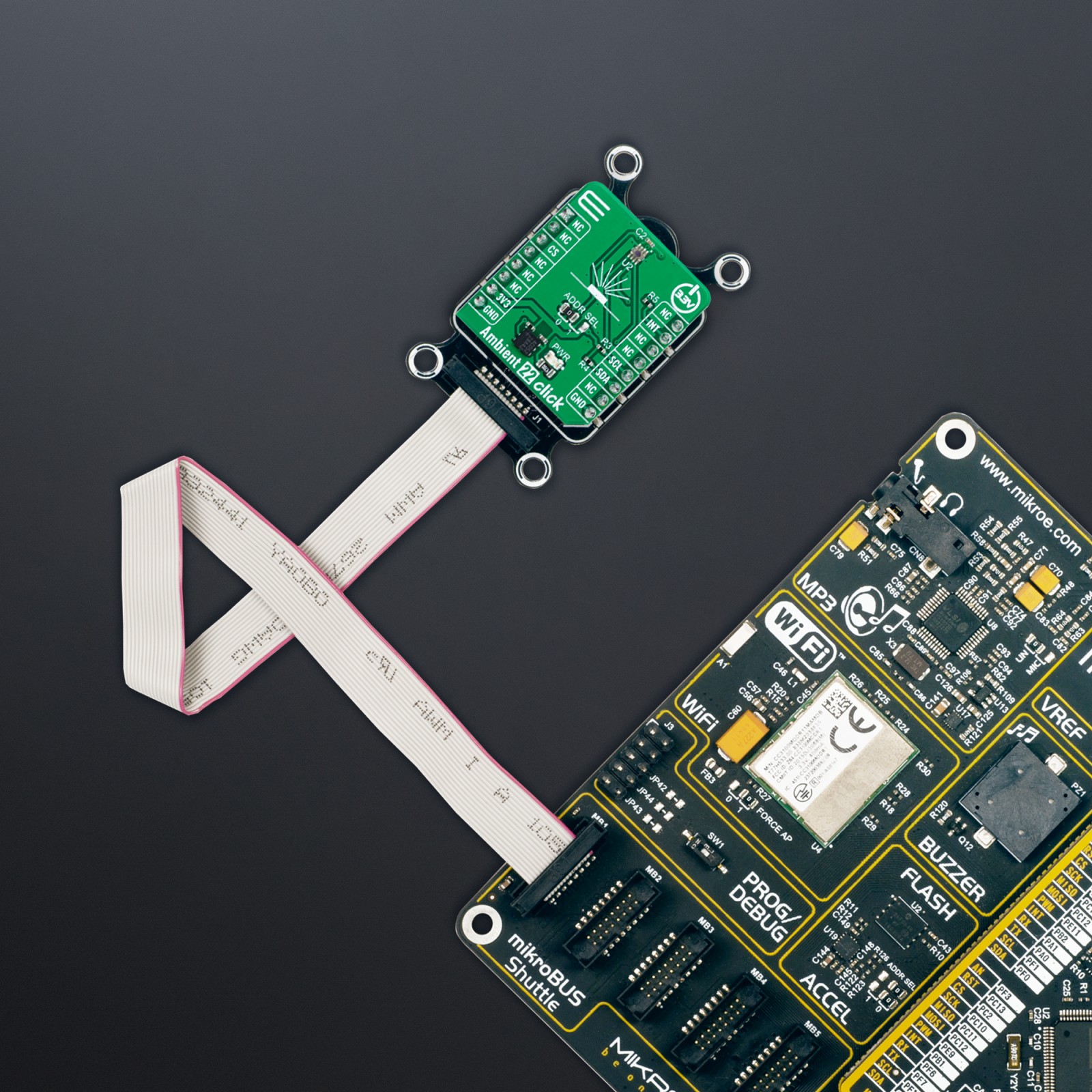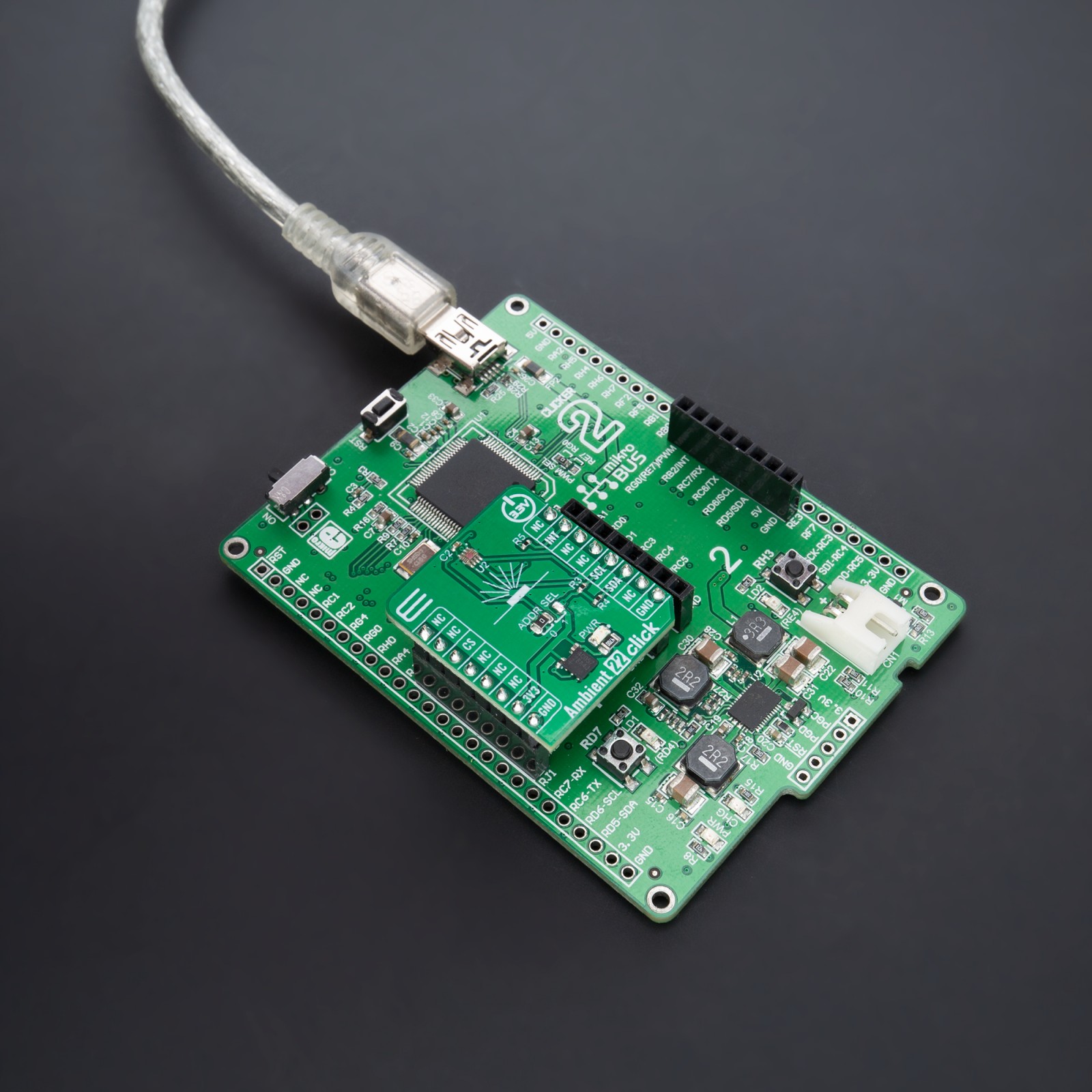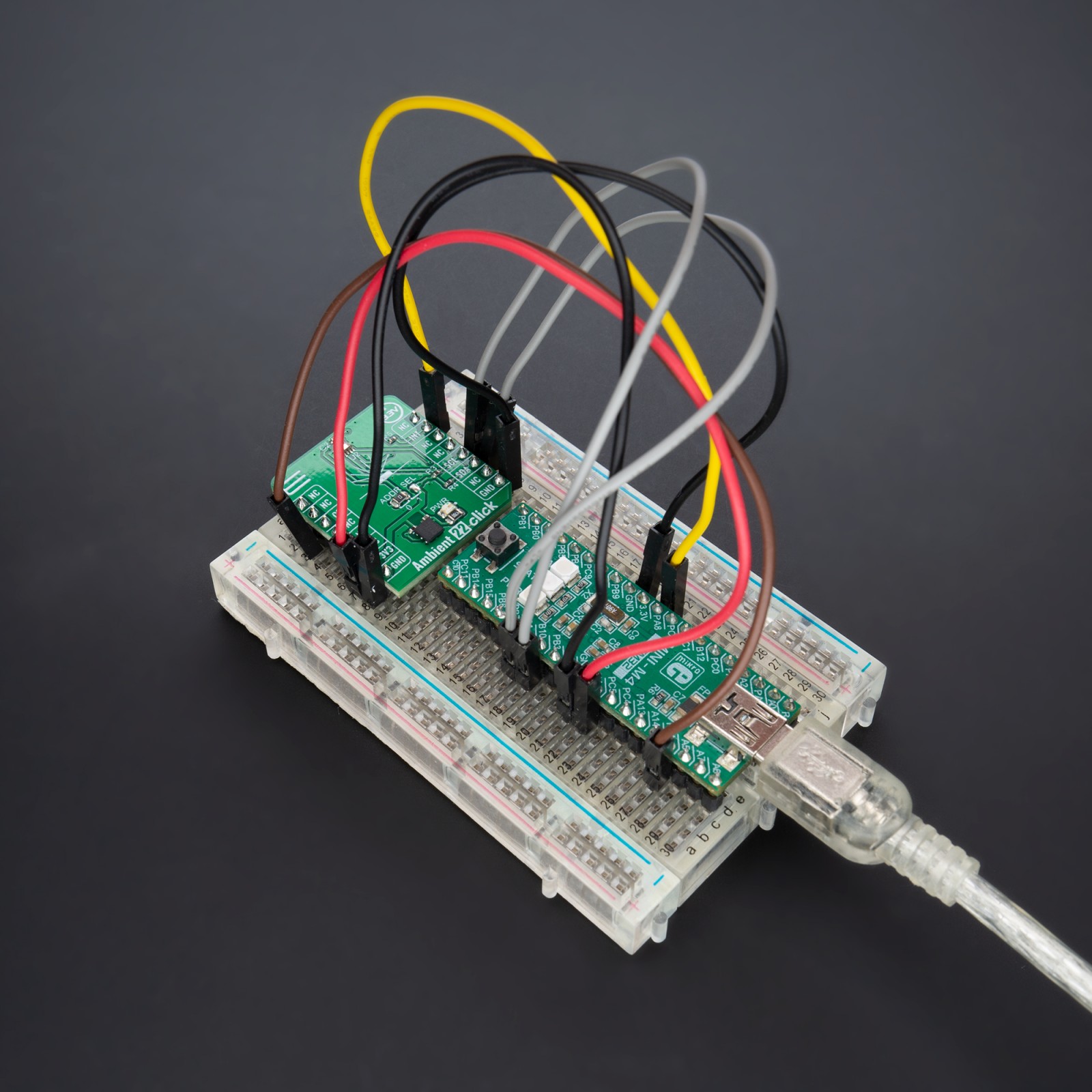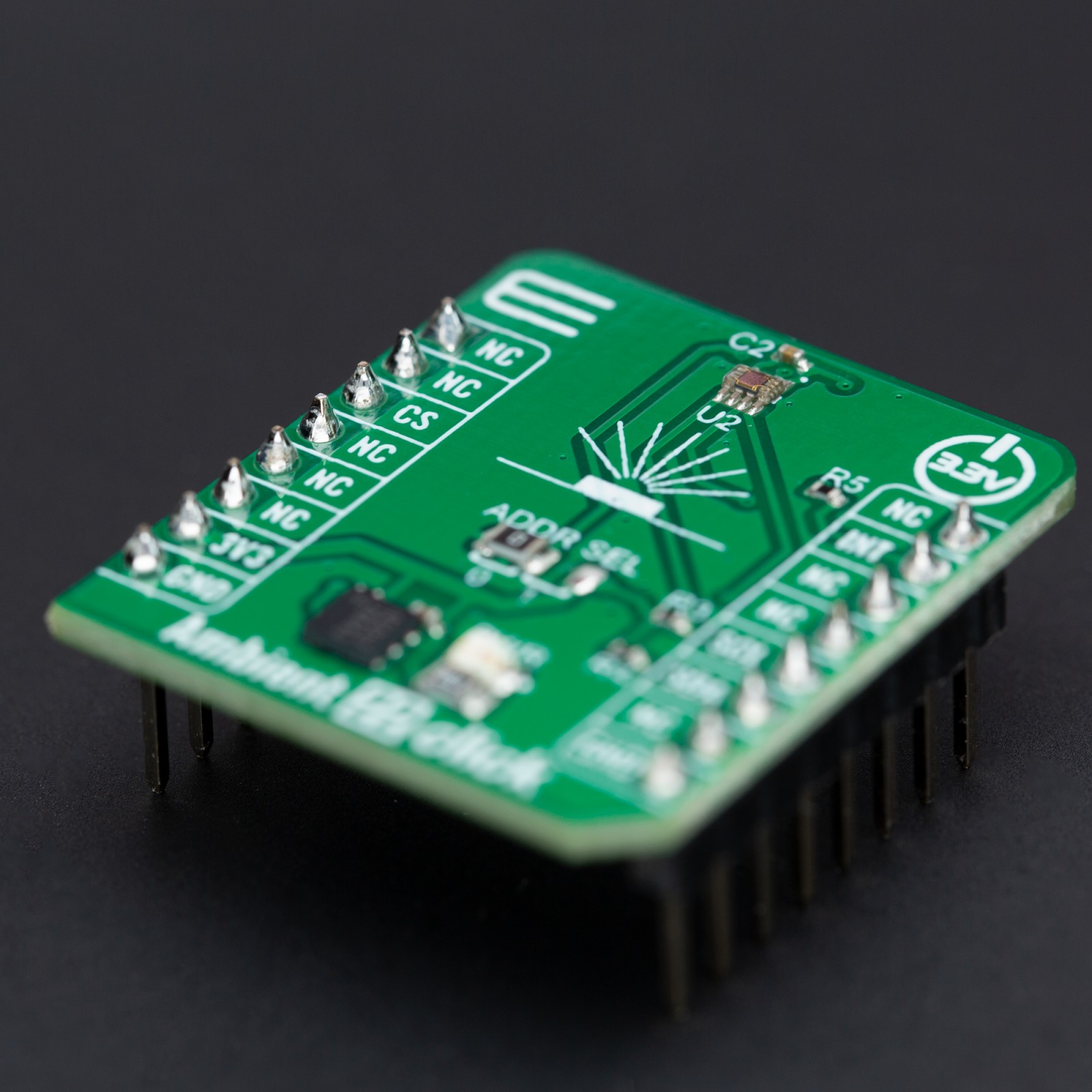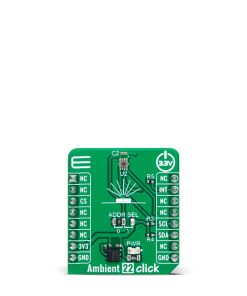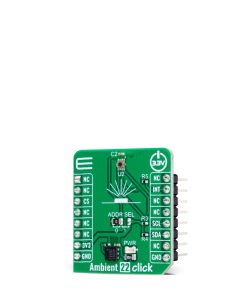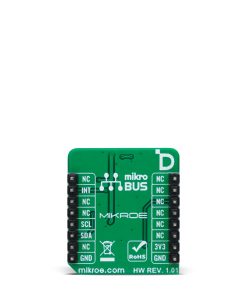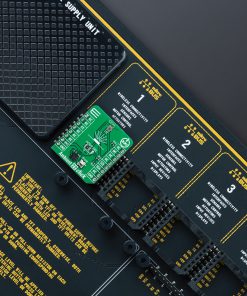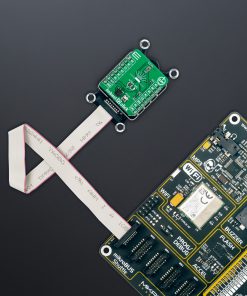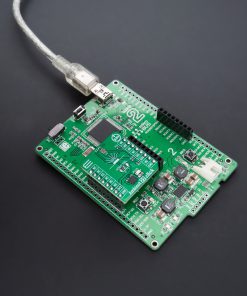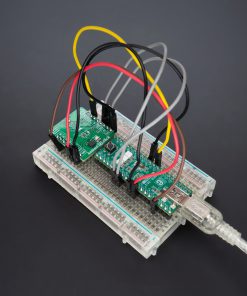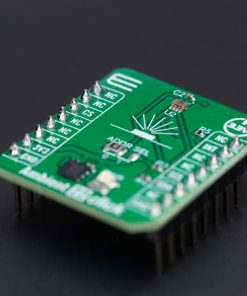Ambient 22 Click
R340.00 ex. VAT
Ambient 22 Click is a compact add-on board that measures the intensity of visible light. This board features the OPT3005, a single-chip lux meter from Texas Instruments that transforms light intensity to a digital signal output that can be directly communicated via an I2C interface. The sensor’s spectral response tightly matches the human eye’s photopic response along with extreme rejection to 850nm and 940nm infrared light over a wide angle of incidence. Measurements can be made from 20mlux up to 166klux without manually selecting full-scale ranges using the built-in, full-scale setting feature. This Click board™ is suitable for obtaining ambient light data in applications like display optical-intensity, industrial, or commercial lighting control.
Ambient 22 Click is fully compatible with the mikroBUS™ socket and can be used on any host system supporting the mikroBUS™ standard. It comes with the mikroSDK open-source libraries, offering unparalleled flexibility for evaluation and customization. What sets this Click board™ apart is the groundbreaking ClickID feature, enabling your host system to seamlessly and automatically detect and identify this add-on board.
Stock: Lead-time applicable.
| 5+ | R323.00 |
| 10+ | R306.00 |
| 15+ | R289.00 |
| 20+ | R278.12 |


